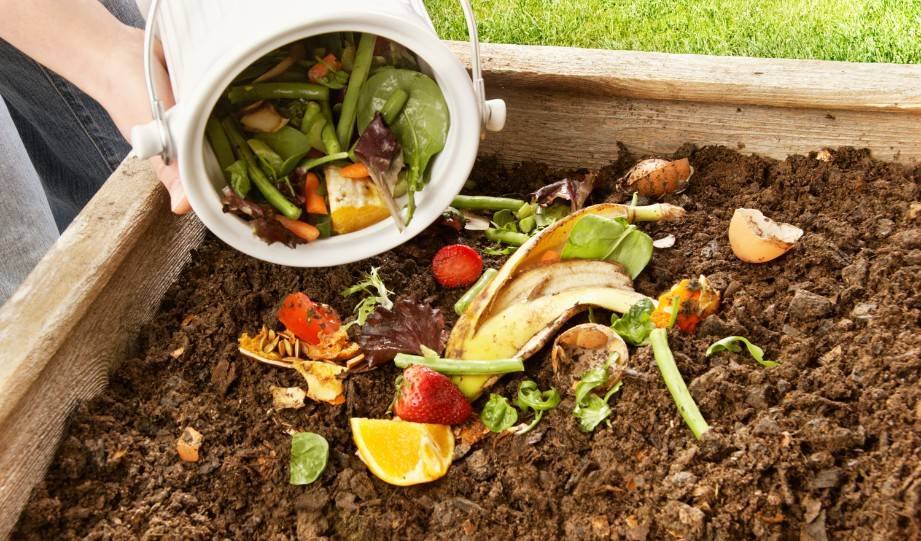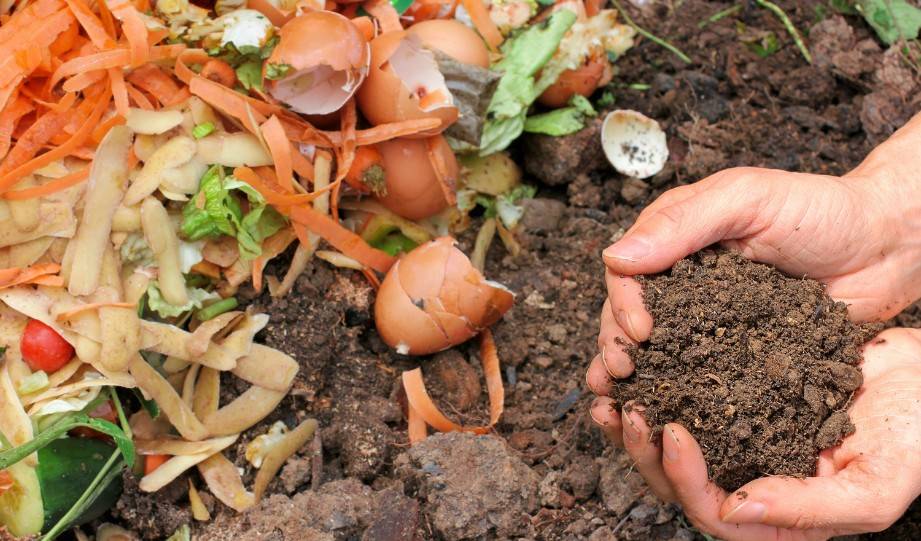Creating organic compost requires some subtle but necessary steps that people often get wrong. Follow our step-by-step guide to avoid making mistakes.

Most people think of all homemade compost as being fully organic material. After all, it’s decomposed food with no chemicals added in as soil amendments.
But if you’re trying to create a genuinely organic fruit and vegetable garden, then you need to be aware of a few things.
The good news is that the method for organic composting doesn’t require any special equipment. The main difference just comes down to being more conscious of what you feed in as composting material.
I’ve put together this simple guide to help you avoid some common mistakes.
What Is Organic Compost?
Technically speaking, organic compost is decomposed food and garden waste from plants that were never exposed to chemical and artificial substances to help them grow. [1]
That means that the majority of standard fruit and vegetables, as well as many flowers and lawns, may not be suitable to create a truly organic form of compost.
The important thing to keep in mind is that you’d need to be 100% sure of the source of all the materials that you’re going to be adding to your compost pile.
If you only buy organic food and avoid all types of chemicals in your garden, then you don’t have to be that concerned.
But for most people, the composting process will need to be a bit more carefully planned.
What Can Compromise The Organic Integrity Of Composts?
Synthetic fertilizers and pesticides could compromise your composted end product. [2] I’ve identified 3 items that you need to check thoroughly for pesticides and synthetic fertilizers before adding them to your compost.
1. Food
Food producers abundantly use herbicides and pesticides for industrial-scale food production. Even farms that operate at smaller scales will often rely on them in order to protect their crops. However, the chemicals that are used in this process will remain on the fruits and vegetables, and they won’t break down during composting.
2. Grass Clippings And Plants
Many of us will resort to using some fertilizers to help our lawns in the early days of spring. It’s certainly a way to give plants a short term growth spurt.
But these fertilizers often contain chemical ingredients, unless you buy certified manure or plant-based fertilizer that doesn't contain such chemicals.
So, before you start adding grass clippings and leaves from trees into your compost, take a look at what type of fertilizer you might have used on your lawn in the past.
3. Plant Meal
Many people prefer this type of compostable material, which is mulch from crops like soy, alfalfa, corn, and even cotton.
It’s certainly a great way to add some starchy carbon-rich materials into the mix. And for vegans and animal lovers, it’s going to be the preferred solution over manure.
But most of these crops are heavily reliant on chemicals, which doesn’t make them a suitable option.
That’s why you’ll need to check the label for such products in your local garden center.
How To Make High-Quality Organic Compost
Here are some simple tips that will allow you to organically create amazing compost in a much shorter time.
1. Set Up Your Compost Bin
The capacity of the bin will depend on how much waste you produce.
Most people start with a 3x3 foot bin, as it will allow you to add more waste and let it settle over time. For me, I use this tumbling composter from FCMP Outdoor Store.
You want to make sure that it’s reasonably sheltered and not in constant direct sunlight all day long.

2. Build Your Base Layer
Start by adding a layer of brown waste like leaves, grass clippings, and other plants that will deliver a lot of carbon.
It’s important to aim for a 50/50 mix of brown and green waste, which is why it might help to have some clippings readily available.
3. Chop The Waste Up Small
This is probably the one thing most people skip but shouldn't. If you can chop up all the materials, it’ll be a lot easier for worms and microbes to further break them down.
Use a manual mulcher to make sure it’s cut down as small as possible.
If you’re cleaning out your fridge, and you’ve got fruits and vegetables that have gone bad, those are great for composting,
Jennifer Trent, Iowa Waste Reduction Center
4. Add Your Food Greens
The next step is to add your nitrogen-rich food waste from vegetables and fruit. You should also cut them up into small pieces to make the process work that much faster.
Now, the important thing is that you only want to add the waste that came from certified organic food. Anything else will likely introduce pesticides and herbicides that don’t belong in your composter.
5. Add Some Compost Starter
You’ll be able to get these at any garden center or online. It’s usually a brown paste that you mix with water to spray onto the different layers.
Personally, I like using this compost starter from Jobe’s Organics.
Its main goal is to introduce microbes to kickstart the process.

6. Spray With Water
Depending on the time of year, you have to make sure that your compost doesn’t get too dry.
Spray some water on each layer, and then check every few days if it’s still moist enough.
7. Keep Rotating The Pile
After a few days, you want to start mixing up the pile. This aerates it and allows for the carbon and nitrogen-rich materials to mix properly.
This is where a tumbling composter becomes especially useful. It’s easier to turn a tumbling composter than to turn the compost pile yourself.
8. Monitor Progress
You can use a soil thermometer to check the progress every couple of days.
It’s not uncommon for temperatures to rise up as high as 140°F (60°C). If they dip below 110°F (43°C), then it’s time to rotate again.
Once you see a brown crumbly soil-like material, it’s time to get planting.
Here’s an excellent video you can watch to learn how to make hot compost quickly:
Read More:
FAQ
Compost is better than topsoil for providing vital nutrients for plants to grow. However, topsoil also has its benefits, like providing a stronger foundation for roots. It also retains water for longer, which is why people often mix the two.
Yes, you can plant directly into compost, but you have to be careful with water retention. Because compost is loose and far less dense, it won’t hold as much water and tends to dry out quickly.
The best compost for vegetable gardens is the aged type that is almost black in color. This means that the materials have completely decomposed, making them more easily available for new growth.
No, potting soil isn’t the same as compost. They usually have a different nutrient composition, and potting soil is mostly a mix with fertilizers rather than nutrients that have come from a composting process.
Conclusion
Organically created compost requires a slightly different approach that gardening and grow-it-yourself enthusiasts need to be aware of.
Composting is not rocket science, but if you skip any of the above steps, then you could end up waiting a long time and ending up with an inferior product.
You should have all the information on what is in compost that would be organically sourced, so try to use this process for your next batch.
References
- https://aggie-horticulture.tamu.edu/earthkind/landscape/dont-bag-it/chapter-1-the-decomposition-process/
- https://www.ams.usda.gov/sites/default/files/media/GuideForOrganicCropProducers.pdf






Can wood ash be used in the compost?
Pingback: 11 Natural Pesticides For Your Garden: Homemade, Organic & Effective - GreenCitizen